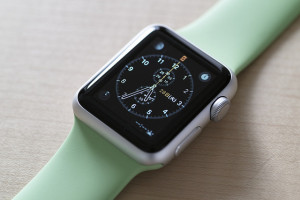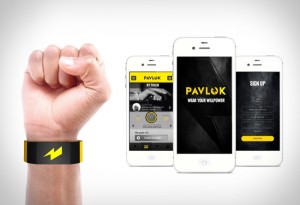Subscribe to blog updates via email »
The Behavioral Revolution (not the Information Revolution)
I’ve come to a frightening realization. As the little car icon jitters towards my apartment on the map, I discover…
…I’ve once again forgotten how to tie a bow tie.
No worries, after a quick search, a debonair Southern gentleman is explaining it to me. As I get my “Your Uber has arrived!” text message, his calm and collected voice eases my anxiety over running late: “Take the high side through the center, and snap it shut.”

WANT TO WRITE A BOOK?
Download your FREE copy of How to Write a Book »
(for a limited time)
Success! Bow tie engaged!
I arrive at the wedding expecting the usual compliments on my bow tie, but then I notice something. Nearly half of all of the men at the wedding are wearing a bow tie, too. Something had clearly changed.
Bow Tie Literacy, and why bow ties are popular again
When I got home, Google Trends revealed what I was so surprised to witness at the wedding. Bow ties have become extremely popular. Look at how much searches for “bow tie” have outpaced searches for “neck tie” over the past 10 years.
No doubt there are multiple reasons why bow ties have become so popular. But one of them is probably increased “bow tie literacy.”
Not knowing how to tie a bow tie might have stopped you from wearing one 20 years ago, but it’s not going to stop you today. Do a search, follow the instructions, and go back to not having any idea how to tie a bow tie.
The Information Revolution has solved the “bow tie problem”
Thanks to the Information Revolution, “the bow tie problem” has been solved, along with many other problems.
Take “the restaurant problem.” Wherever you are, you can find the highest rated restaurant on Yelp or Foursquare.
There’s “the long-lost friend problem.” All of the people from your past are on Facebook, for better or for worse.
There’s also the “when does the next bus come?” problem, the “who’s single?” problem, and the “why do cabs cost so damn much?” problem.
All of these are “information problems.” Any problem that can be solved with simple information, is pretty much solved.
But, not all problems are so simple.
The Information Revolution can’t solve the “lose weight problem”
There are nearly (slightly fewer, if you can believe that) as many search results for “how to lose weight” as there are for “how to tie a bow tie.” Apparently being thin isn’t as popular as wearing bow ties. More than one third of U.S. adults are obese.
From an informational standpoint, losing weight is simple: eat less, exercise more.
From a behavioral standpoint, losing weight is clearly very hard. You have to overcome cravings, find the time and motivation to exercise, and fight through the barriers to do such things within an economy that thrives from making you obese.
The coming Behavioral Revolution will solve the “lose weight problem”
Increasingly, we’re finding that the challenges in our lives aren’t challenges of information. They’re challenges of behavior. Fortunately, we’re poised to solve many of these problems.
We have the knowledge for a behavioral revolution
In fact, we’ve had much of the knowledge to solve these problems for many decades. What’s changing is who has the power to use that knowledge. In the past, advertisers used it to change our behavior and get us to buy things.
The DeBeers cartel has managed, over the last century, to make a diamond ring a must-have item for American brides.
In the first half of the 1900s, Edward Bernays was instrumental in public relations campaigns that made bacon and eggs the “All-American Breakfast” and made it acceptable for women to smoke in public (which was a “gold mine” for the tobacco industry).
Scientists are now quantifying the behavioral change techniques that advertisers have used intuitively for years. Dan Ariely (my colleague at Timeful), and Daniel Kahneman have done ground-breaking research that has shed light on why humans sometimes behave irrationally.
Stanford’s B.J. Fogg has been researching the way that behavior interacts with technology, and how that technology can be used to change behavior.
As we learn more about why people behave the way they do, the knowledge for a behavior revolution is being transferred from advertisers and big business to individual entrepreneurs. This transfer may create the economic force necessary to make a behavioral revolution possible.
We have the technology for a behavioral revolution
The power to persuade used to be controlled by a few giants. They targeted us through television, magazines and newspapers. But today, we’re persuaded by our friends through mobile devices. How many times have you donated to a cause after a friend shared something on social media?
Mobile devices and wearable computing have introduced a vector for behavioral change. But, as windows to endless distractions, they can end up blocking their own potential.
The Apple Watch is poised to open up new avenues for behavioral change, but it remains to be seen if developers will step up to the challenge.

The Apple Watch is a promising vector for behavioral change. Photo: Yasunobu Ikeda
One of the first apps available on the Apple Watch monitors the wearer’s blood sugar. Dexcom, the app developer, will measure blood glucose levels every five minutes (by way of a monitor inserted under the skin) and display the results on a graph.
That’s tremendous progress for diabetics, but the simple act of providing a blood sugar reading is a simplistic use of this technology. When the Apple Watch can take blood sugar readings through less invasive means (such as through skin contact), there are myriad possibilities for behavioral change.
Take for example, one of the most commonly-used (and short-sighted) examples of the potential of “The Internet of Things.” It goes something like this: “one day, your refrigerator will be able to tell you your milk is about to spoil.”
Imagine if, instead, your Apple Watch told your fridge your blood sugar (and thus: willpower) was low, and then your fridge suggested a nutritious snack before you could reach for the ice cream.
As The Internet of Things continues to grow, it will introduce plenty of new touch points for altering our behavior, as long as the experience vs. technology challenge is addressed.
The experience vs. technology challenge
To someone with a hammer, everything looks like a nail, and this is a big problem in product design. The Behavioral Revolution will require expertise in psychology and behavior change, but it will also require knowledge in hardware and software.
The problem that many Behavioral Revolution founders will run into is that they only have expertise in one of those areas. Cross-disciplinary collaboration may be attempted, but the big home runs won’t happen until someone steps forward with product vision that covers both disciplines.
The first major step in the Behavior Revolution will be a product that focuses on the experience, not the technology (and probably not too deeply on the psychology either).
Until then, we’ll have solutions that are either strong on behavioral theory, but weak on technology or strong on technology, but weak on behavioral theory. Or great software implemented on hardware that’s too impractical to inspire any real behavioral change.

The Pavlok wristband & app incorporate behavioral science & product design innovation.
A promising device that balances technology with behavioral science so far is Pavlok, a bracelet coupled with mobile software. The software gets your friends involved in helping you keep your goals, and the bracelet will shock you (yes, literally) for failing.
The “good” vs. “evil” challenge
The big, scary challenge of the Behavioral Revolution is whether or not these new powers will be used for “good” or “evil.”
Before the Behavior Revolution can take place, there has to be sufficient economic force to solve the “lose weight challenge” and others like it.
That economic force has to be stronger than the force in favor of using the Behavioral Revolution for the “get-people-to-crave-cheaply-produced-low-quality foods-then-sell-them-drugs-to-treat-their-poor-health” approach. (This isn’t only about food and health. Insert your thing-you-care-about here.)
It’s easy to be cynical and use your brain-calculator to see that clearly, the latter approach will be more profitable, and thus win. But, emerging economic mechanics are making natural, cultural, and social capital more powerful elements in the economic equation.
For example, Etsy, valued at over $3.5 billion, is a B Corp, a private certification that helps companies account for their social and environmental impact.
As more small businesses are created, we are also seeing more socially-conscious missions. It’s hard to look back on Apple’s famous 1984 commercial and deny that – at least for the time being – the Personal Computing and Information Revolutions have allowed people like myself to make a living while acting with their health, values and curiosities in mind. So, as tools and methodologies make the powers of persuasion available to individual entrepreneurs, there’s hope that those powers will be used for “good.” Companies that aren’t accountable to litigious public shareholders will feel less pressure to profit at the expense of less-tangible forms of capital.
Who will lead the Behavioral Revolution?
We’re on the cusp of the Behavioral Revolution. We’ve made great progress in the science of behavior change, and the technology to implement it is becoming ubiquitous. Hopefully, these powers will be used to bring humanity to a new plane of existence. To do so, we need entrepreneurs who will use cutting-edge technology, with the latest behavioral knowledge, to help make our lives better. Who’s up for the challenge?
The Information Revolution is over. We're on the cusp of a Behavioral Revolution now: http://t.co/KnF8xfZdHL (my latest)
— ? David Kadavy | Time ?? Mind Management (@kadavy) May 4, 2015



